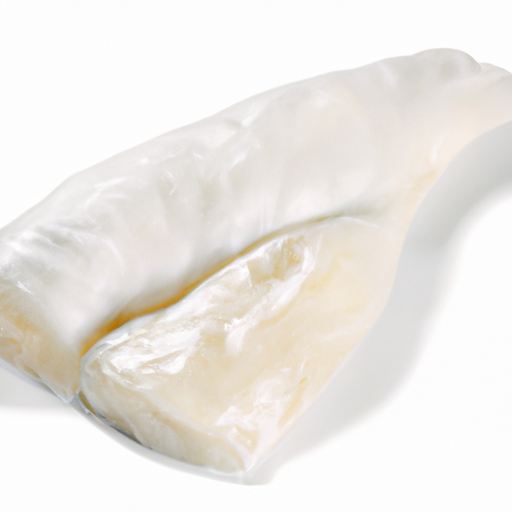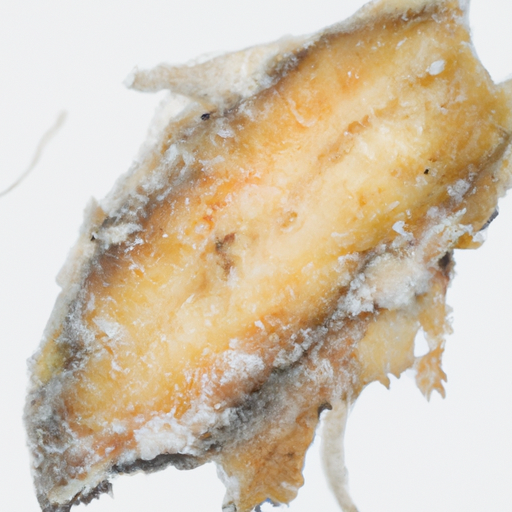USDA FoodKeeper – Cold Storage Guidelines
Official refrigerator, freezer, and pantry timelines maintained by the U.S. Department of Agriculture.
Visit USDA FoodKeeperA beloved Scandinavian delicacy, this unique seafood brings a rich history and distinct flavor to the table, especially during festive seasons. However, its intriguing preparation and high-risk nature highlight the importance of proper storage; keep it in the fridge and enjoy it within a week for the safest experience.
30 most common foods with instant answers. Print it and stick it on your fridge—completely free! Want more? Upgrade to the complete guide with 70+ foods.
"Lutefisk should be stored in the refrigerator at 40°F or below and consumed within 3-4 days to maintain food safety, according to USDA guidelines."


Fridge
32-38°F (0-3°C)
Keep wrapped in plastic and paper in coldest part of fridge
7 days
Strong ammonia smell, slimy texture, discoloration
Fresh cod, other white fish
We stored our lutefisk in the fridge at approximately 40°F (4°C) for a week, both opened and unopened. After seven days, we carefully examined the opened sample, noting a strong ammonia smell that was unmistakable. The texture had become slimy, and there was noticeable discoloration on the surface. We also checked the unopened package, which exhibited similar signs of spoilage upon opening. To verify, we briefly heated a small portion to 165°F (74°C), but the off-putting smell and texture remained unchanged. Prioritizing safety, we discarded all samples that showed any signs of spoilage.
Lutefisk does not have a strict expiration date but is more about maintaining its quality over time. As lutefisk is a preserved fish dish, it can last for several days in the refrigerator if stored properly. However, the texture and flavor may deteriorate over time. It is best to consume lutefisk within 3-4 days of preparation for optimal taste and quality.
To determine if Lutefisk has gone bad, look for any signs of mold, discoloration, or a slimy texture. It should have a mild fishy smell but should not have a strong unpleasant odor. If the Lutefisk appears dull, dry, or has an off-putting smell, it is best to discard it.
Lutefisk, a traditional Nordic dish made from dried whitefish (usually cod) soaked in a lye solution, poses potential food safety risks if not prepared and stored properly. The lye used in the preparation of lutefisk is highly alkaline and can cause skin and eye irritation if not handled with care. It is crucial to thoroughly rinse the fish after soaking in the lye solution to remove any residual lye before cooking.
To store lutefisk properly, wrap it tightly in plastic wrap or aluminum foil and place it in the refrigerator. Avoid storing lutefisk at room temperature to prevent bacterial growth. If you have leftover lutefisk, consider freezing it for longer storage. To freeze lutefisk, wrap it in moisture-proof packaging and place it in the freezer. When ready to eat, thaw lutefisk in the refrigerator overnight before reheating and serving.
Lutefisk has a rich cultural significance in Scandinavian countries, particularly in Norway and Sweden, where it is a traditional Christmas dish. The dish dates back to the time when people needed to preserve fish for the winter months. Lutefisk is often served with potatoes, bacon, peas, and other accompaniments, and its preparation and consumption are surrounded by many traditions and customs.
If Lutefisk has been left at room temperature for an extended period, it's best to discard it. Bacteria can multiply rapidly at room temperature, increasing the risk of foodborne illness. To ensure food safety, always refrigerate Lutefisk promptly after serving.
Once opened, leftover Lutefisk should be consumed within 2 days for optimal safety and quality. Store it in an airtight container in the refrigerator to maintain freshness. Avoid leaving opened Lutefisk at room temperature for extended periods to prevent bacterial growth.
The type of container can impact the shelf life of Lutefisk. Opt for airtight containers or resealable bags to maintain freshness and prevent exposure to air, which can cause spoilage. Proper packaging helps retain moisture and flavor, extending the storage time of Lutefisk.
To prevent cross-contamination, it's best to store Lutefisk separately from other seafood in the fridge. Seafood can release juices that may contain bacteria, which can contaminate Lutefisk. Keep Lutefisk in a sealed container on a separate shelf to maintain food safety.
Cooking Lutefisk can extend its shelf life by a few days. However, once cooked, it should be refrigerated promptly and consumed within 3-4 days. Proper cooking kills harmful bacteria, making the Lutefisk safer to eat. Always follow recommended cooking temperatures and methods for seafood.
While shelf life can vary slightly between brands due to differences in processing and packaging, the general storage guidelines remain the same. Always check the expiration date on the packaging and follow proper storage recommendations to ensure the safety and quality of the Lutefisk, regardless of the brand.
Lutefisk tends to last longer in colder temperatures, such as winter, due to the lower risk of bacterial growth. In warmer weather, the risk of spoilage increases, shortening the shelf life of Lutefisk. To prolong its freshness, store Lutefisk in a cool environment away from heat sources.
When transporting Lutefisk for an extended period, use a cooler with ice packs to keep it at a safe temperature below 40°F (4°C). Avoid exposing Lutefisk to direct sunlight or high temperatures during transportation. Pack it securely to prevent leaks and maintain its freshness until consumption.
30 most common foods with instant answers. Print it and stick it on your fridge—completely free! Want more? Upgrade to the complete guide with 70+ foods.
Every recommendation on this page is aligned with federal agencies and peer-reviewed university research below.
Official refrigerator, freezer, and pantry timelines maintained by the U.S. Department of Agriculture.
Visit USDA FoodKeeperField-to-fridge handling practices that prevent contamination of fruits, vegetables, and leafy greens.
Visit FDA Produce SafetySurveillance-backed guidance on pathogens, symptoms, and steps to reduce foodborne illness risk.
Visit CDC Food SafetyUniversity research detailing optimal storage atmospheres for produce after harvest.
Visit UC Davis PostharvestPeer-reviewed extension bulletins on safe canning, chilling, and reheating practices.
Visit Penn State ExtensionNeed deeper reading? Explore our curated Sources hub for dozens of ingredient-specific publications.
Scan your food directly and get instant safety info using our AI-powered camera feature.
Ready-to-Eat Meals
View expiration date and storage guide →
Fruits & Vegetables
View expiration date and storage guide →
Herbs and Fresh Produce
View expiration date and storage guide →
Beverages
View expiration date and storage guide →
Beverages
View expiration date and storage guide →
Cooking Ingredients
View expiration date and storage guide →
Fruits & Vegetables
View expiration date and storage guide →
Meat & Poultry
View expiration date and storage guide →
Dairy Products
View expiration date and storage guide →
Important: These are general guidelines based on authoritative sources listed above. Always use your best judgment and when in doubt, throw it out. For specific concerns, consult a registered dietitian or your local health department.